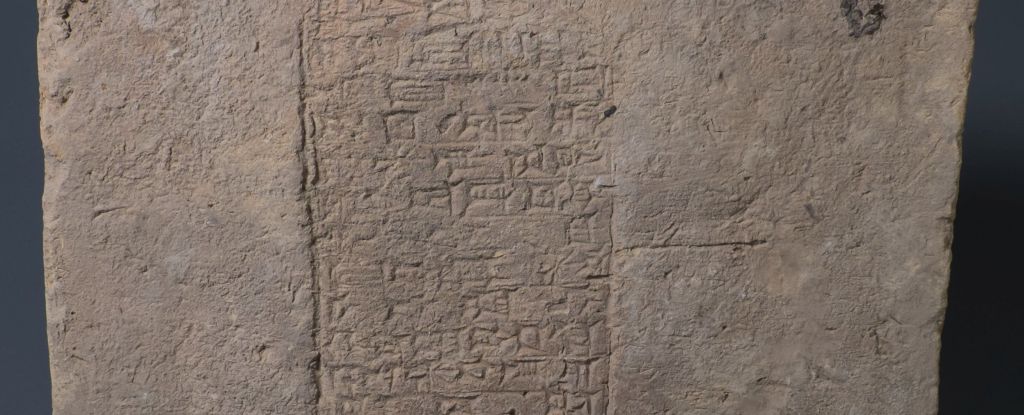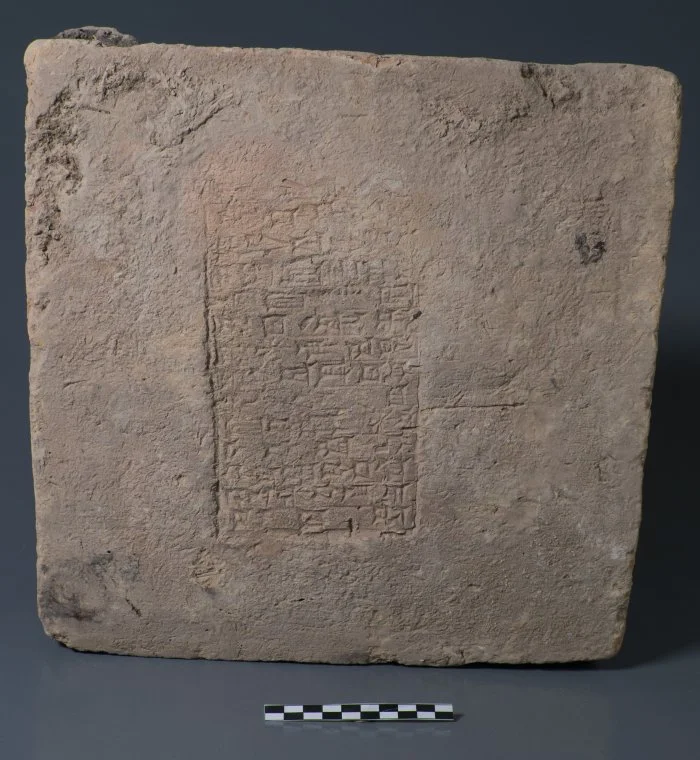Mysterious Anomaly In Earth’s Magnetic Field Documented On 3,000-Year-Old Mesopotamian Bricks

Inscriptions on Mesopotamian bricks promoting the king when they were fired have helped reveal the details of a curious strengthening of the Earth’s magnetic field.
Traces of this puzzling strength have been found from China to the Atlantic Ocean, and they stand out more the closer they are to what is now Iraq over a 500-year period starting just over 3,000 years ago. Yet evidence from the region itself has been scarce and poorly dated, until now.
The Earth’s magnetic field is not consistent in time or space. Temporary weak patches have shown up, without a reason we yet understand, as have pockets of unexplained strength.
The field saves us from space radiation, and guides our navigation systems and those of migrating animals; explaining this curious behavior is something of a priority.
Knowing when these anomalies started and finished, and how they fluctuated over time, is seen as crucial to this, but seldom easy. In the case of one of the more famous anomalies, scientists have received some help from ancient Mesopotamian brick-makers.
We can know a little about the Earth’s previous magnetic field because under certain circumstances magnetic materials retain an imprint of the field in which they were formed, or underwent major changes.
Plate tectonics, the 20th Century’s most important geologic discovery, was proven because of the record of magnetic fields held in lava flows around mid-oceanic ridges.
However, to make full use of this we need accurate dating. It would be really nice if someone offered us a date stamp and fortunately, in one case, someone has.
Professor Mark Altaweel of University College London is studying the exceptional strength of the magnetic field in the Middle East around 3,000 years ago, known as the Levantine Iron Age geomagnetic Anomaly.
“We often depend on dating methods such as radiocarbon dates to get a sense of chronology in ancient Mesopotamia. However, some of the most common cultural remains, such as bricks and ceramics, cannot typically be easily dated because they don’t contain organic material,” Altaweel said in a statement.
However, Altaweel and colleagues have located 32 Mesopotamian clay bricks, each inscribed with the name of one of 12 kings, presumably the ruler at the time they were made. These bricks also include iron oxide grains that retain the direction and strength of the magnetic field they were in when they were fired.
Depending on the length of a king’s reign, and how well we know its timing, the inscriptions can be a much more precise record than carbon dating, which has uncertainties of decades or centuries.

The grains’ magnetism was measured by chipping fragments weighing 2 grams (0.07 ounces) off the bricks that were then tested with a magnetometer.
The results confirm the field was almost twice as strong in the area as it had been a thousand years before. Appropriately enough, the greatest shift Altaweel and colleagues found occurred during the reign of one king whose name remains familiar.
Nebuchadnezzar II, also known as Nebuchadnezzar the Great, is far more famous than his similarly named predecessor. In his favor are the establishment of the legendary Hanging Gardens of Babylon, and other major construction projects. History has looked less kindly on his destruction of Jerusalem and enslavement of the Jews and other peoples from the region.

Five bricks from Nebuchadnezzar II’s reign were tested, and they produce wildly different magnetic field strengths, suggesting fluctuations larger and more rapid than we have detected elsewhere over just 42 years. This confirms suspicions the geomagnetic field can undergo rapid spikes.
“The geomagnetic field is one of the most enigmatic phenomena in earth sciences,” said Professor Lisa Tauxe of the Scripps Institution of Oceanography. This work has put us in a better position to solve that enigma, but the authors have not yet been able to do so.
The work has proven more immediately beneficial to historians. Detailed records are available of the order of the 12 kings, and the length of their reigns, but debate continues as to when the sequence started and ended.
By comparing the fields recorded in the bricks with those measured using other methods, the team have provided backing for one of the competing timelines historian have proposed, known as the Low Chronology.
Anomalies like this are not just a thing of the past. The South Atlantic Anomaly (SAA) is thought to be millions of years old, but continues to this day.
Lacking a similar dating method, scientists have tracked changes in the strength of the SAA 800-500 years ago by measuring ash from huts in the area that were burned during this time.
The study is published in Proceedings of the National Academy of Sciences.
Related Post
A shocking documentary proves that mermaids do exist
SHOCKING Revelation: Thuya, Mother of Queen Tiye, Was the Grandmother of Akhenaten and Tutankhamun—What Ancient Egyptian Secrets Did She Leave Behind?
Breaking News: Astonishing Discoveries at Karahan Tepe Confirm an Extraterrestrial Civilization is Hiding on Earth, and NO ONE Knows!
Breaking News: Researchers FINALLY Discover U.S. Navy Flight 19 After 75 Years Lost in the Bermuda Triangle!
NASA’s Secret Investigation: Uncovering the Astonishing Mystery of the UFO Crash on the Mountain!
Explosive UFO Docs LEAKED: Startling Proof That Aliens Ruled Ancient Egypt!